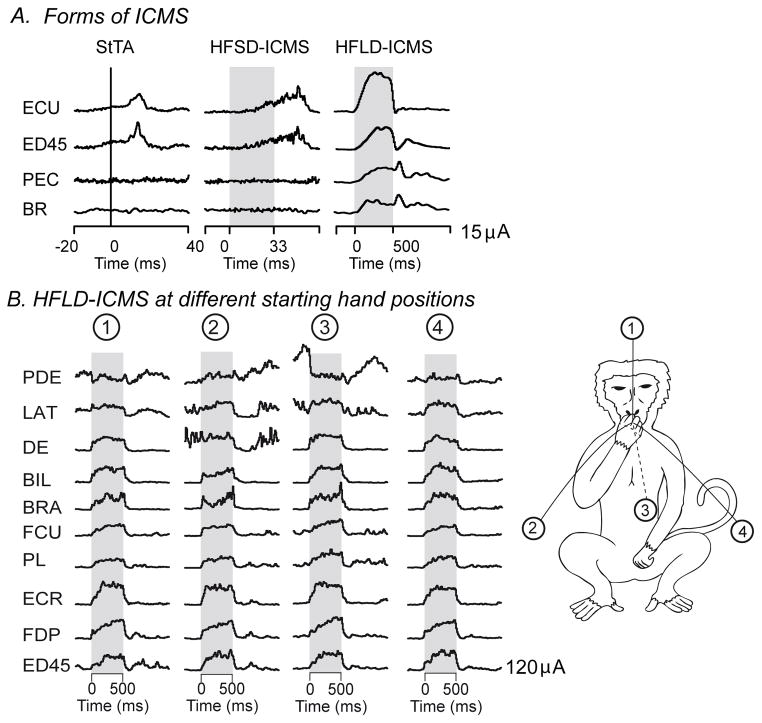Figure 1.
Figure 1A. Forms of intracranial microstimulation (ICMS). Stimulus triggered averaging of EMG activity (StTA), high frequency, short duration ICMS (HFSD-ICMS), high frequency, long duration ICMS (HFLD-ICMS). Note the difference in time scales for each type of ICMS. Stimulus evoked responses in EMG activity obtained with each type of ICMS at one cortical site. StTA is a subthreshold method in that no movements are evoked. Stimuli are delivered at a low rate (20 Hz or less) to avoid temporal summation of excitatory postsynaptic potentials (EPSPs). Averages are aligned with stimuli occurring at zero time. With the two high frequency methods, stimuli are typically applied at 100–400 Hz for either 500–1000 ms (HFLD-ICMS) or as a train of 10–15 pulses (HFSD-ICMS) indicated by the shading. B. HFLD-ICMS applied at one cortical site with the hand at different starting positions indicated by the monkey drawing at the right. The circled numbers indicate four different starting positions of the hand when stimulation was applied. In all cases, stimulation drove the hand to a common end-point at the mouth. Stimulus intensity was 120μA for all records. For each muscle, note the similarity in the EMG level achieved during stimulation across all initial starting positions.

